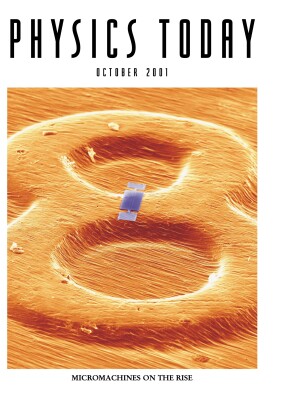A superconducting single-photon optical detector
DOI: 10.1063/1.2405675
A superconducting single-photon optical detector has been demonstrated by a Russian–US collaboration. The researchers deposited ultrathin (5 nm), 0.2-micron-wide strips of superconducting niobium nitride on a sapphire substrate. When a photon struck the film, a hotspot of excited electrons was created that disrupted the superconducting current and generated a detectable voltage spike. Rapid diffusion of hot electrons and cooling by liquid helium healed the hotspot within about 30 ps, restoring the superconductivity and allowing for a gigahertz repetition rate. The detector is already finding uses in checking integrated circuits, where it can record individual infrared photons that are released when a transistor switches on or off. The researchers say that it might also be used in practical quantum cryptography and as an efficient detector of optical signals for wireless communications in space. (G. N. Gol’tsman et al.., Appl. Phys. Lett. 79, 705, 2001 http://dx.doi.org/10.1063/1.1388868
